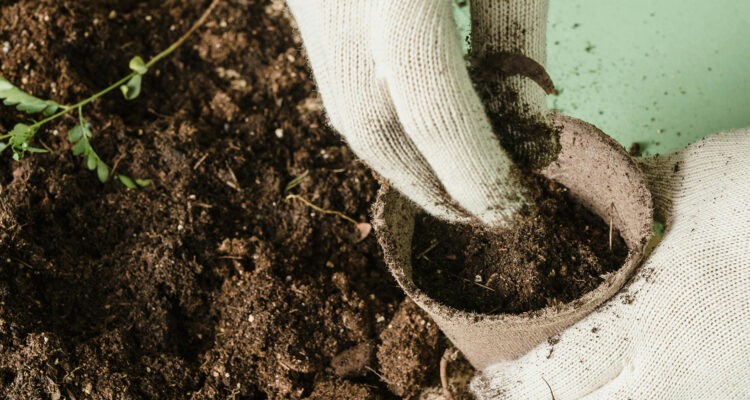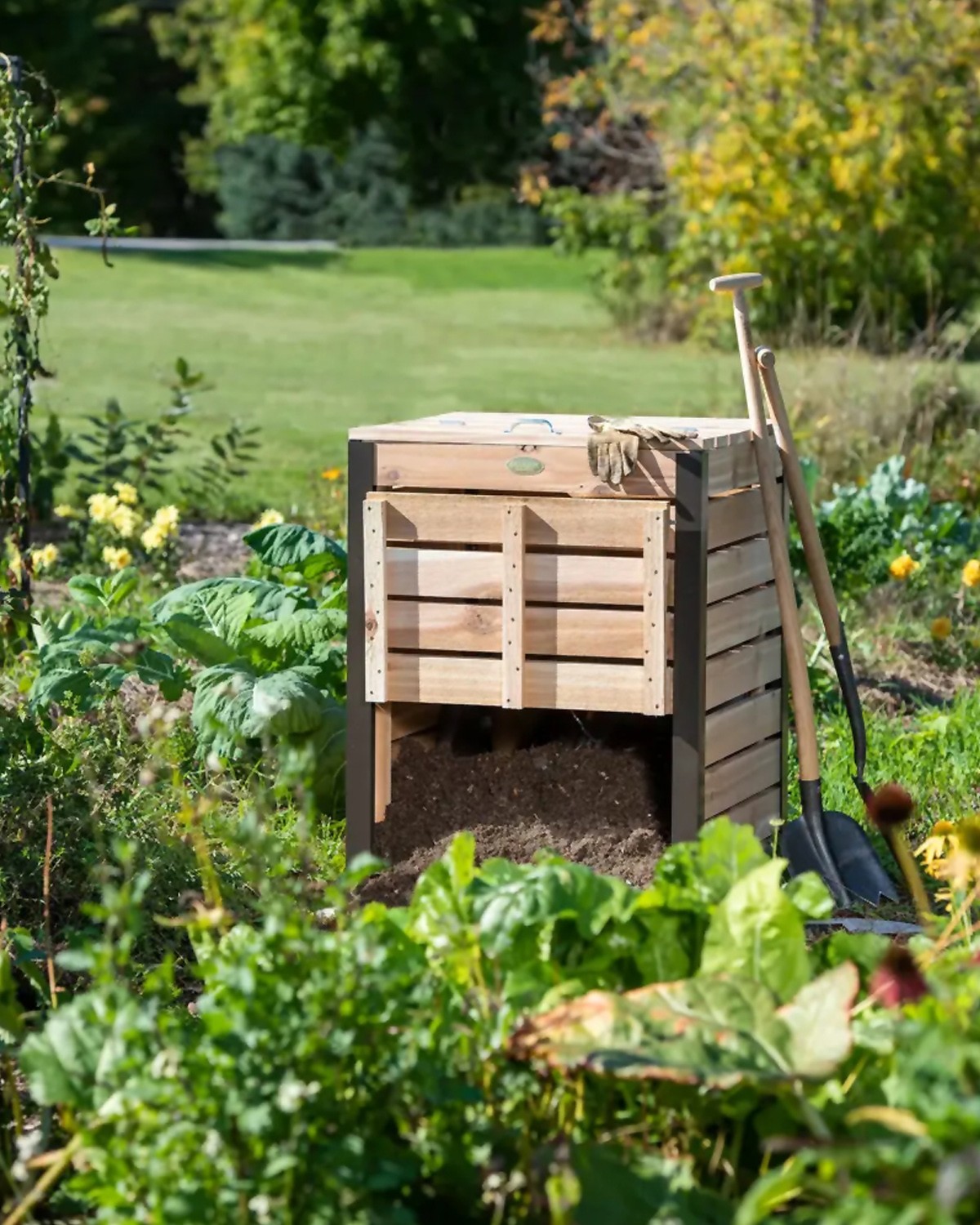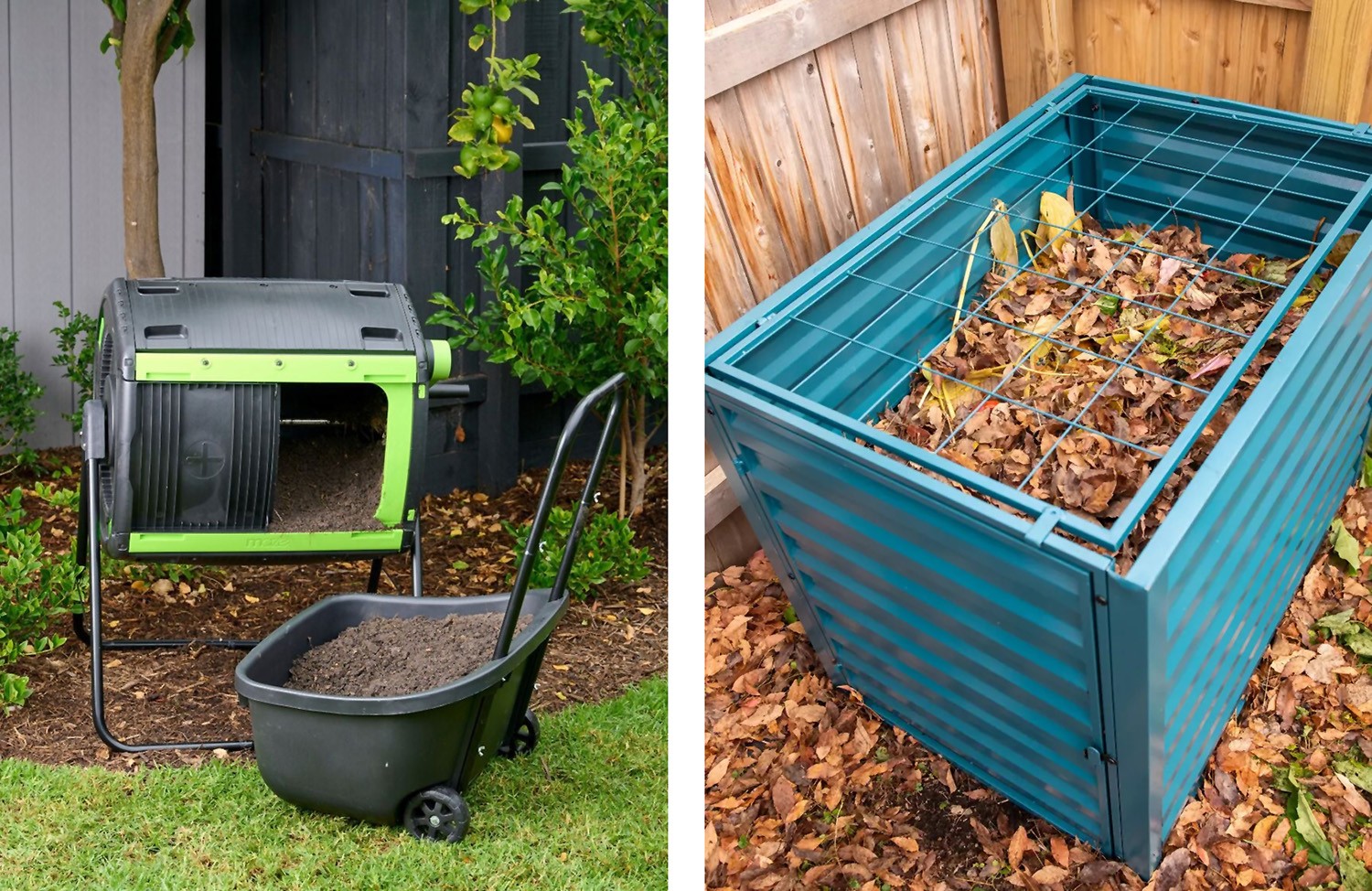Nature is calling…
Story by Judy Goppert | Photos courtesy of Gardener’s Supply Company
Want to reduce the amount of solid waste entering our landfills and your trash can? It’s super easy and you have everything you need right in your yard and kitchen. Fallen leaves, grass clippings, shrubbery trimmings, peelings, eggshells, and other landscape products we know as yard waste make up the ultimate soil amendment. Your efforts benefit your landscape and the entire community.
Select a level, well-drained area in your yard that is accessible. Some like to hide their compost pile, so it can be placed in a remote corner of your yard. Others like to keep it close so materials can be easily added. Be creative with your compost pile and look online for bins to build.
Compost is often called “black gold” because of its value in improving garden soil. It’s easy, and your plants love it. It’s enjoyable, interesting to watch its evolution, and will teach others how easy it is to help nature. It is composed of a mixture of soil and decomposed organic matter that has been transformed into rich and crumbly organic matter – the decomposers: bacteria, fungi, microorganisms, air, and water.
Layer greens and browns like lasagna, alternating them. The soil acts like yeast in bread. Add enough water to keep the material moist but not soggy, similar to a wrung-out sponge. So, what goes into this menagerie? A good list is grass clippings, garden weeds without seeds, fruit and veggie scraps, kitchen waste like eggshells, peelings, plant residue, coffee grounds, pine needles, nut shells … you get the idea.
No-nos are pet waste, (so no used cat litter!), meat and animal products, poisonous plants, fat, grease or oils, and dairy products.
Simply add as you go. A good rule of thumb is a three-by-three-foot pile. This is big enough for the pile to heat up and small enough to easily turn. Larger piles don’t allow enough air to reach the center of the pile. The heat created by the elements composts the mixture.
If you shred or chop the materials into small pieces and make sure moisture is adequate, and turn the pile every two to four weeks, it should produce compost in three to four months. With less attention, it will take six months to a year. You’ll know it is ready when it turns dark brown and soil-like with a good earthy smell.
When using your finished compost think, “feed the soil, not the plants.” Use it for flower and vegetable gardens by adding a layer of compost before planting. For perennials, add compost to the planting hole prior to placing the plant. Use it as a mulch and place it around trees and shrubs. Even fill an old pillowcase with compost and place it in a five-gallon bucket of water for a couple days. Agitate the bag now and then, just like a tea bag. When it’s ready, the water is beneficial for transplants, garden flowers, vegetables, container plants, and indoor plants. Just like a tea bag, you can use the filled pillowcase again for another batch.
In early spring or late fall, sprinkle compost on top of your grass, where it will work its way into the soil as the grass grows. Your grass will be healthier, hold water better, be greener, and need less fertilizer or no fertilizer at all.
Shredding or chopping your garden waste with a shovel or running it through a lawnmower will speed up composting because it creates more surface areas for the microorganisms to work on. Remember, when you add kitchen waste, always cover it with something else to avoid flies.
If your project begins to smell rotten, turn the pile or add a dry, porous material such as sawdust, wood chips or straw. If it gets too hard, turn it or make it smaller. If it is too large, reduce the size. If you don’t have good ventilation, turn the pile. You must maintain the heat within the material for it to decompose.
In cold weather increase the size of the pile or insulate it with an extra layer of material such as straw. If you have rats, raccoons or insects, that means you have too many meat scraps or fatty food waste, so be mindful of the materials you are adding. Cover the pile with a layer of soil or sawdust. You can also build an animal–proof compost bin. And as we’ve said, turn the pile to increase the temperature.
There is always the option of purchasing a compost tumbler. Available in different styles and sizes, these rotating containers make composting easy and fast. They provide a convenient way to mix and aerate the materials while keeping pests out, with their convenient size being popular for smaller yards.








